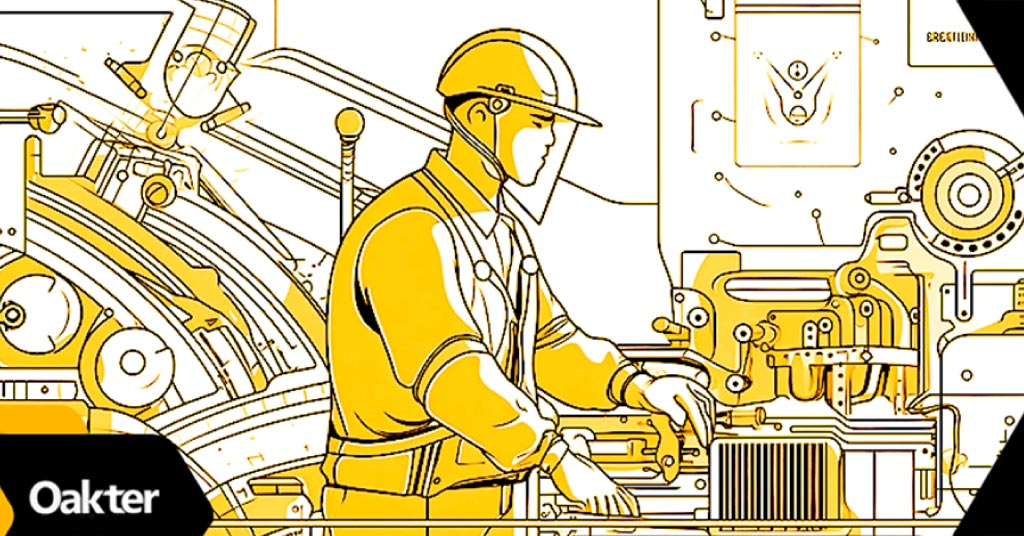
Unleashing Design Potential: OEM Outsourcing as a Catalyst for Design Efficiency
OEM outsourcing has become a significant strategy in the manufacturing industry. It involves partnering with original equipment manufacturers (OEMs) to delegate design tasks and leverage their expertise. This strategic approach allows companies to focus on their core competencies while benefiting from the expertise and resources of OEMs.
On the other hand, design efficiency is a critical factor in product development. Efficient design processes enable companies to create high-quality products in a timely and cost-effective manner.
So, let’s explore the correlation between OEM outsourcing and design efficiency and how outsourcing design tasks to OEMs can unleash businesses’ design potential, resulting in improved design efficiency.
Unveiling the Power of OEM Outsourcing: Driving Competitive Advantage

OEMs are companies that specialise in manufacturing products based on designs provided by other companies. They possess the expertise, resources, and production capabilities to bring these designs to life.
OEM outsourcing is the practice of entrusting design or manufacturing tasks to external partners, i.e., OEMs. The purpose is to leverage their specialised knowledge, capabilities, and resources while allowing businesses to focus on their core competencies.
OEM outsourcing offers various benefits that businesses need to consider. Let’s explore them in more detail:
Key Benefits of OEM outsourcing
Here are some key advantages of OEM outsourcing:
1. Cost reduction
Outsourcing to OEMs reduces expenses by eliminating the need for in-house design and manufacturing operations, resulting in significant cost savings.
2. Access to expertise
OEMs offer specialised knowledge, industry-specific expertise, and advanced technologies, providing enterprises with access to valuable resources that may not be available internally.
3. Time-to-market advantages
Collaborating with OEMs enables faster production and delivery, helping companies seize market opportunities, respond to customer demands promptly, and gain a competitive edge.
4. Quality control concerns
Maintaining consistent quality standards can be a challenge when outsourcing. Businesses must establish clear quality control processes and effective communication channels to ensure the desired level of quality throughout the partnership.
5. Intellectual property protection
Protecting intellectual property is vital when sharing sensitive design information with OEMs. Robust legal agreements, confidentiality provisions, and security measures are essential to safeguard proprietary knowledge and prevent unauthorised use or disclosure.
Design Efficiency: Driving Business Success through Optimal Design Practices
Design efficiency refers to the ability to create high-quality products in a timely and cost-effective manner. It involves optimising design processes and workflows to streamline development and maximise resource utilisation.
Here are some key factors influencing design efficiency:
1. Collaboration and communication
Effective collaboration and communication between design teams, stakeholders, and suppliers are essential for seamless information exchange, feedback incorporation, and alignment of design goals.
2. Iterative design processes
Embracing iterative design approaches allows for continuous improvement and refinement throughout the product development lifecycle. Iterations enable faster identification and resolution of design issues.
3. Rapid prototyping and testing
Utilising rapid prototyping and testing techniques helps validate design concepts, identify flaws, and make timely adjustments, reducing development time and ensuring optimal product performance.
4. Design standardisation and modularity
Standardising design elements and employing modular approaches enable greater design flexibility, scalability, and reusability. This reduces design complexity, facilitates efficient production, and supports customisation.
Design Efficiency Unleashed: Maximising Potential through OEM Outsourcing
Outsourcing design tasks to OEMs can be a game-changer in achieving design efficiency. Let’s explore how businesses can leverage this strategy:
Collaborative design processes with OEM partners
Collaborative design processes with OEM partners are essential for the following:
1. Establishing clear communication channels
Effective communication is essential for seamless collaboration. Organisations and OEM partners should establish clear channels to facilitate information exchange, align design goals, and address any issues promptly.
2. Utilising shared design platforms and tools
Leveraging shared design platforms and tools fosters collaboration, allows real-time collaboration, and ensures all stakeholders have access to the latest design iterations and updates.
3. Coordinating design iterations and feedback loops
Close coordination between businesses and OEM partners during design iterations and feedback loops ensures continuous improvement, incorporation of feedback, and alignment of design objectives.
Rapid prototyping and testing capabilities through outsourcing:
Outsourcing design to OEMs unlocks rapid prototyping and testing capabilities, including:
1. Access to advanced manufacturing technologies
Outsourcing design to OEMs provides access to their advanced manufacturing technologies and expertise, enabling efficient rapid prototyping and testing. This expedites the design validation process and facilitates timely adjustments.
2. Accelerated development cycles
With access to the latest manufacturing technologies and resources, OEMs can accelerate the development cycles, reducing time-to-market and enabling companies to seize market opportunities.
Design standardisation and modularity in OEM partnerships:
This partnership enables the following:
1. Streamlining product portfolio and design variants
Collaborating with OEMs allows businesses to standardise design elements and streamline their product portfolio. By reducing the number of design variants, companies can optimise resources and enhance efficiency in manufacturing.
2. Reusing and repurposing existing design components
OEM partnerships enable the reuse and repurposing of existing design components, reducing design complexity and development time. This results in cost savings and accelerated product development.
Optimising Success: Best Practices for Implementing OEM Outsourcing
Implementing OEM outsourcing requires a strategic approach and careful management. Consider the following best practices to maximise the benefits of outsourcing:
1. Conducting thorough vendor selection and due diligence
Before partnering with an OEM, conduct comprehensive vendor selection processes. Assess their capabilities, track record, expertise, and financial stability. Perform due diligence to ensure they align with your business goals and values.
2. Establishing clear expectations and communication channels
Clearly define project expectations, deliverables, timelines, and communication protocols with the OEM. Establishing effective communication channels ensures seamless information exchange, prompt issue resolution, and alignment of objectives throughout the outsourcing partnership.
3. Setting up effective project management and monitoring mechanisms
Implement robust project management practices to monitor progress, track milestones, and manage risks. Regularly communicate and collaborate with the OEM to maintain visibility, address challenges, and ensure adherence to quality and timeline expectations.
4. Continuous improvement and learning from outsourcing experiences
Treat each outsourcing experience as a learning opportunity. Gather feedback, evaluate performance, and identify areas for improvement. Continuously refine and optimise your outsourcing strategy based on these insights to enhance future partnerships.
Embrace the Future of OEM Outsourcing for Enhanced Efficiency and Innovation
The future of OEM outsourcing holds immense potential for companies seeking to optimise their design processes. With the right approach and partnerships, companies can leverage the expertise and resources of OEMs to drive innovation, improve efficiency, and gain the upper hand in the competition.
Make a move towards unlocking your design potential. Choose Oakter for your OEM outsourcing needs. We are an advanced Indian ODM shipping 500k+ products every month.
Contact us today to discover how we can collaborate to unleash the power of design in your business.

